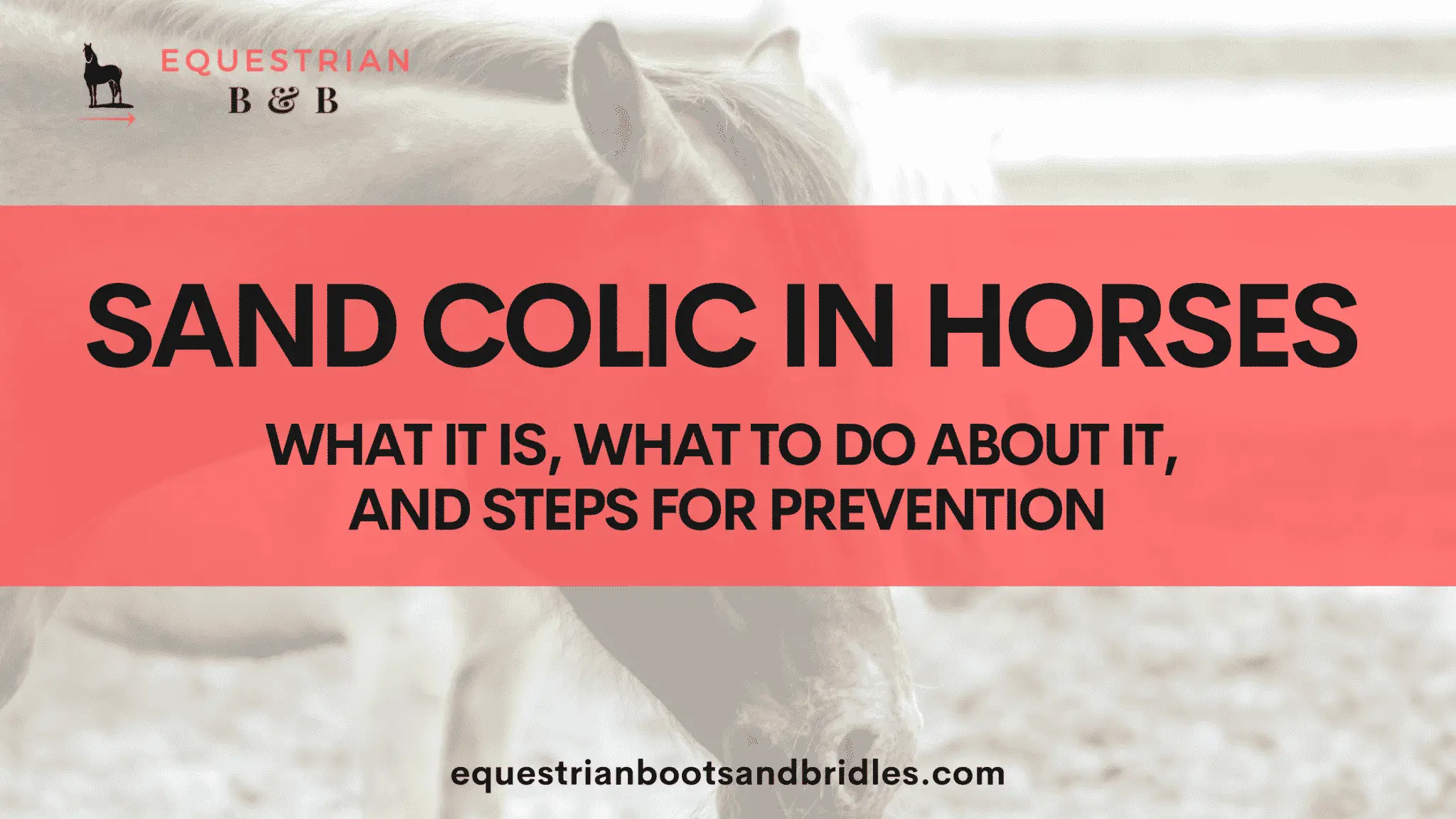Horses pastured and fed on sandy soils can lead to concerns about sand colic in horses. It’s a problem faced by horse owners who live in areas where the soil has high sand content, or turn their horses out in sandy paddocks for long periods of time.
For many, there simply is no other option to keep a horse on a different type of soil, making sand colic prevention a way of life for those engaged in equine husbandry. Read on to learn more about sand colic in horses, what it is, actions you can take to prevent it, and what to do when sand colic happens.
The Basics of Sand Colic and How it Happens
First: what is sand colic? Colic is a type of intestinal distress that happens as the result of an intestinal blockage. The blockage prevents the intestines from working normally and can be partial or full.
Sand colic in horses happens when a horse ingests sand and it accumulates in the colon, resulting in a blockage. As a horse grazes or is fed on sand or sandy soil, they consume sand which then gets into their digestive system. Horses are also known to ingest sand on their own, but no one really knows why!
It’s normal for a horse to ingest a little bit of soil and sand during its grazing. In general, your horse’s digestive system can handle the passing of small bits of non-nutritional objects. It’s when a large amount of sand accumulation happens that problems can start to occur.
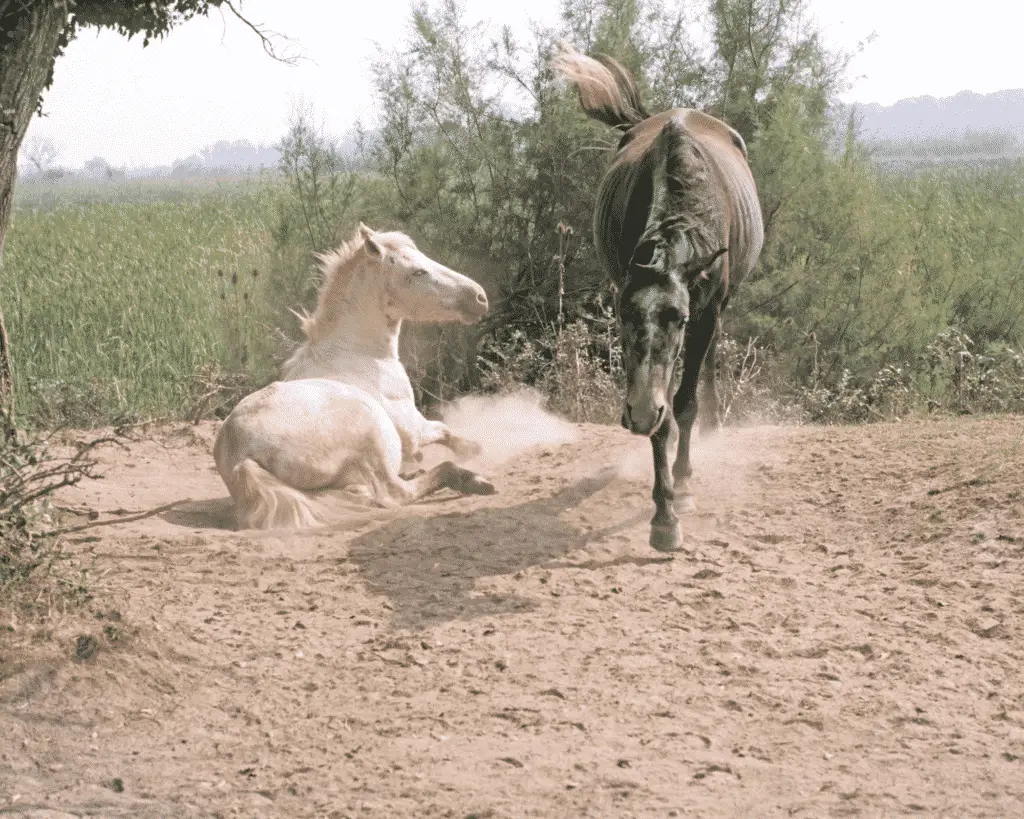
How Sand Accumulation Can Cause Problems
A horse pastured on sandy soil or kept and fed on sandy turnouts on a regular basis is at high risk of developing sand colic. Over time, sand accumulates in the colon and stays there until there’s enough to create a blockage in the intestine.
Sand is abrasive and irritates the lining of the colon, resulting in inflammation and eventually an impaction. The irritation of the mucosa, or stomach/intestinal lining, impairs its function and reduces the colon’s ability to absorb fluids.
When enough sand builds up in the colon, it creates a blockage and can also result in a twist in the colon, stopping the normal flow of food through the digestive system. This results in the horse showing signs of sand colic.
The Signs of Sand Colic in Horses
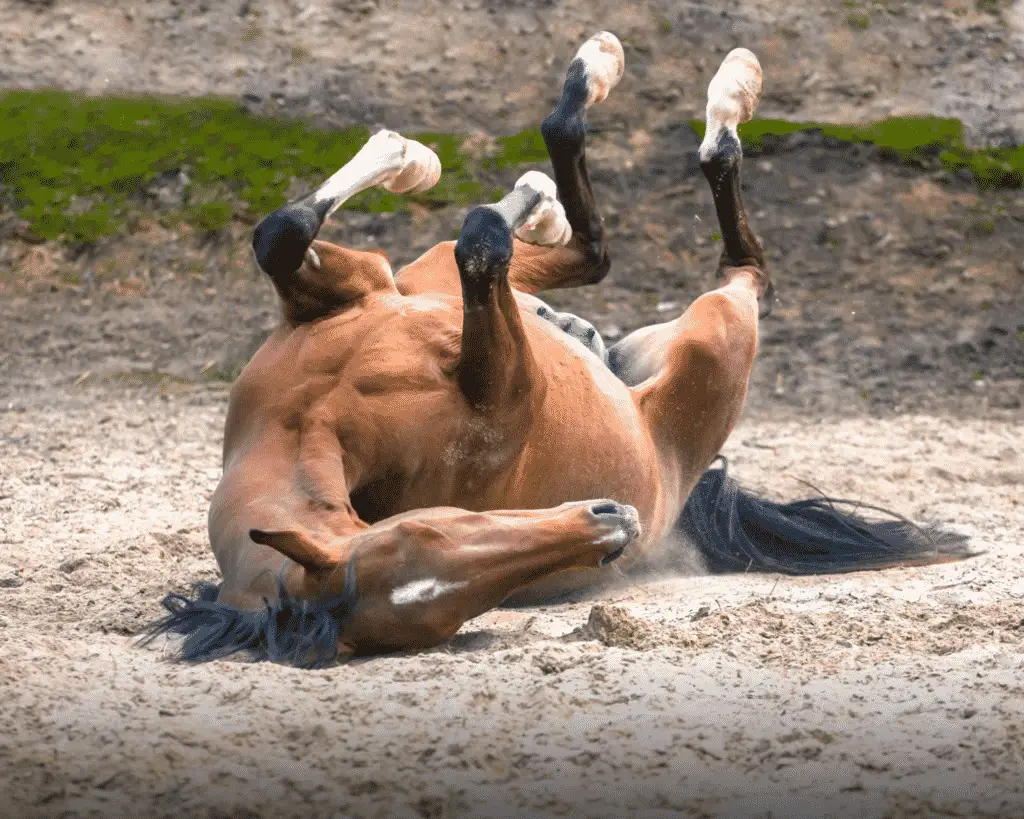
Sand colic in horses presents in much the same way as gas or impaction colic, but there is one unmistakable sign that your horse is about to have an episode before the full signs of colic show up: loose stools.
The irritation in the colon causes loose manure and diarrhea and is always an indicator that your horse is carrying a lot of sand in its colon. A horse experiencing sand colic may also have a mild fever over 101.5o F when taken rectally.
Other colic symptoms and signs are essentially the same as other types of colic. They include behaviors such as:
- Rolling
- Lying down
- Biting at its sides
- Kicking
- Pawing
- Sweating
- Irritation
- Loss of appetite
- Little to no sound in the stomach and abdomen
These symptoms can indicate that your horse is experiencing abdominal pain. You may also see unexplained weight loss due to the colon’s inability to absorb calories and nutrients due to irritation.
Horses experiencing sand colic are likely to have diarrhea even when they’re experiencing a blockage. This is the only type of colic where a horse can still produce manure even when they’re in full distress. Don’t let the appearance of diarrhea make you think your horse isn’t truly clicking.
When you see that your horse has diarrhea or any of the other symptoms listed above, you should call the vet for help.
Treating Sand Colic
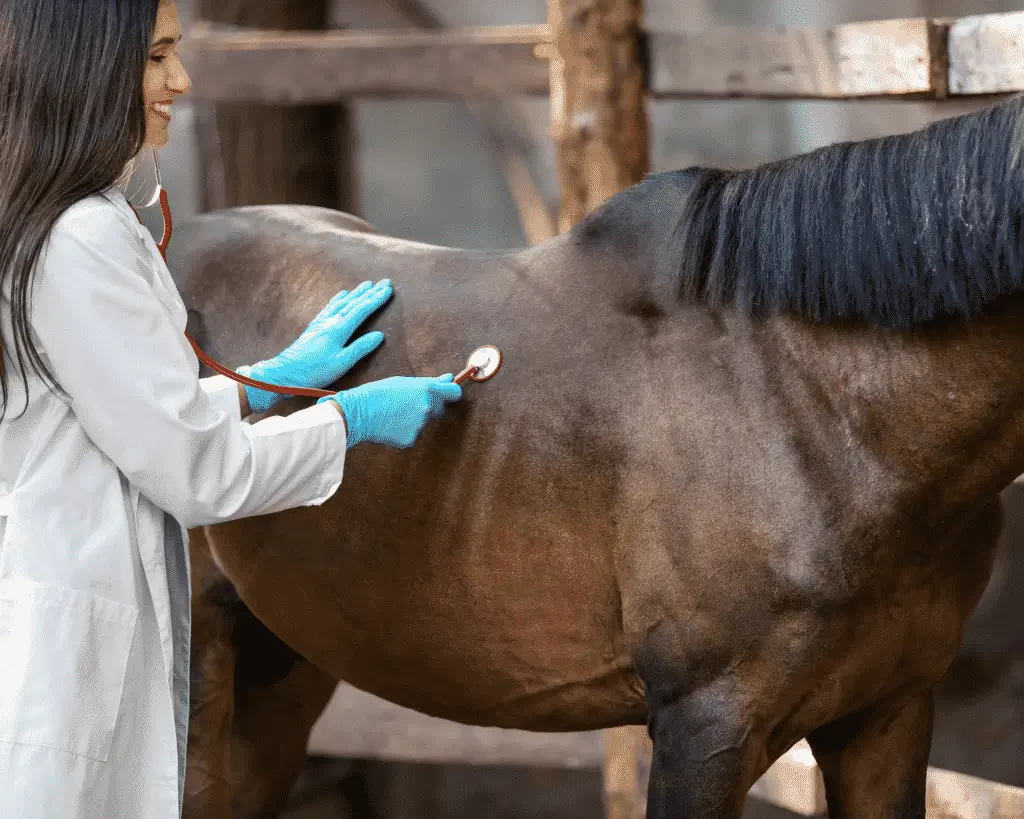
Treatment for sand colic comes in the form of calling the vet for an emergency visit or trailering the horse to the nearest equine hospital or treatment facility. Time is of the essence for a horse in full colic and the sooner your horse receives proper medical treatment, the better.
Don’t offer your horse food unless otherwise directed by the vet. You can provide water if your horse is willing to drink.
Your veterinarian has various diagnostic and treatment tools that enable them to confirm a diagnosis of sand colic and treat the issue. The first step the vet may take is to listen to the colon for the sound of sand moving around. Sand colic makes a distinctive noise that can be detected by the trained ear through a stethoscope.
The vet may also administer a pain reliever to help your horse relax and stay calm during the diagnostic process, as well as help reduce inflammation.
Abdominal x-rays are usually taken to determine the location of the blockage and how much sand is in the colon. In the event the vet can’t detect what they’re listening for, and x-rays are not an option, the vet will palpate the horse’s rectum for sand. Sometimes it’s possible for a vet to feel the impaction of sand in the colon during the palpation and confirm the diagnosis.
Once the vet is confident that the issue is sand colic, they will usually proceed to treat your horse with a mixture of mineral oil and water administered through a nasogastric tube. The tube is inserted through the nasal cavity of your horse and passed through the back of the throat into the stomach. Once the tube is in the stomach, the vet connects a manual pump to the tube for the direct delivery of the mineral oil and water. After the veterinarian finishes pumping the mixture, it’s a waiting game to see if the sand will float out of the intestines and clear the blockage.
In the event the fluids don’t flush out the sand, the next available treatment option is surgery. This is done at an equine hospital that’s equipped to perform surgery on horses and remove the blockage.
What You Can Do to Prevent Sand Colic From Happening

1. Don’t feed your horse on top of sandy soil
The most effective method of preventing sand colic is to feed your horse their roughage on rubber mats, hay nets, or from feeders. Ground feeding hay on top of sandy soil serves to increase the amount of sand a horse ingests as they pick up the sand with their lips and through hay coated with sand, so you’ll want to take steps to try and prevent excess sand particles from making their way into the feed.
A slow feeder like this one is optimal because it makes your horse chew for longer and stimulates its digestive system to work for a longer period of time. In turn, the digestive system becomes more effective at pushing sand through the horse’s stomach and intestines and minimizing buildup.
2. Try psyllium husk for prevention
A daily serving of psyllium husk can lower the risk of sand colic in horses, but opinions vary on its effectiveness. Psyllium has been shown to reduce the amount of sand that collects in the intestines, but treatment regimens can differ as well as results.
You should discuss the benefits of feeding psyllium with your vet to determine if it’s something you should do as a preventative measure. Your vet may recommend supplementing with a product like SandClear or Natu-Lax.
3. Rotate pastures and keep the grass short
Pasture rotation is another step you can take to prevent sand colic in horses. When grass is tall, horses are less likely to pull up the whole plant and ingest dirt and sand.
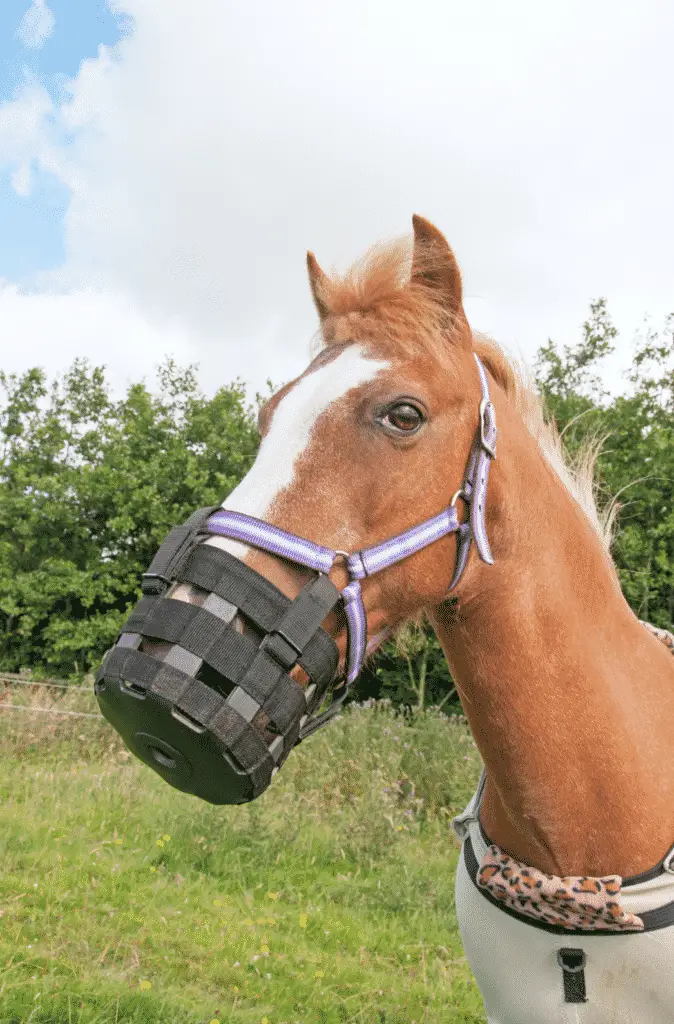
4. Try a grazing muzzle
The addition of a grazing muzzle can also help reduce the risk of sand colic as it forces the horse to slow down its consumption of forage and encourages the digestive system to work for longer.
5. Consider using mineral oil
The most effective treatment for the prevention of sand colic is also the most inconvenient and unrealistic for most horse owners, as it requires the use of a nasogastric tube and mineral oil. A 2016 study involving the treatment of sand colic found that the application of mineral oil through a nasogastric tube and the feeding of psyllium in hard feed is the most effective method of clearing sand.
The average horse owner should not apply a nasogastric tube on their own due to the risks involved. However, you can pour mineral oil over hard feed for your horse to ingest and assist with the clearing of sand.
Something to keep in mind is the fact you’re going to see loose manure as the result of feeding your horse mineral oil or psyllium. You can rule sand in or out as a cause by performing a simple fecal test. This involves collecting a few pieces of manure and dropping them into a container of water. Mix the manure with the water until it breaks down and releases what’s inside. Sand will sink to the bottom while oil and psyllium will float. This test will tell you how much sand your horse is ingesting, and can even reveal worms and larvae, indicating that it’s time to get out the dewormer.
Conclusion
Sand colic in horses is preventable with proper feeding arrangements, preventative maintenance, and paying attention to the early signs of sand colic. You may not be able to change the quality of the soil your horse lives on, but you can keep them comfortable and content by taking steps to minimize the amount of sand they consume in the first place.
Sources:
https://brandonequine.com/wp-content/uploads/2020/05/sand-colic-barrett.pdf
https://www.ncbi.nlm.nih.gov/pmc/articles/PMC5059958/
https://ker.com/equinews/horse-ingesting-sand/
https://www.farnam.com/stable-talk/use-psyllium-help-avoid-sand-colic
https://ker.com/equinews/psyllium-prevention-sand-colic-horses/

